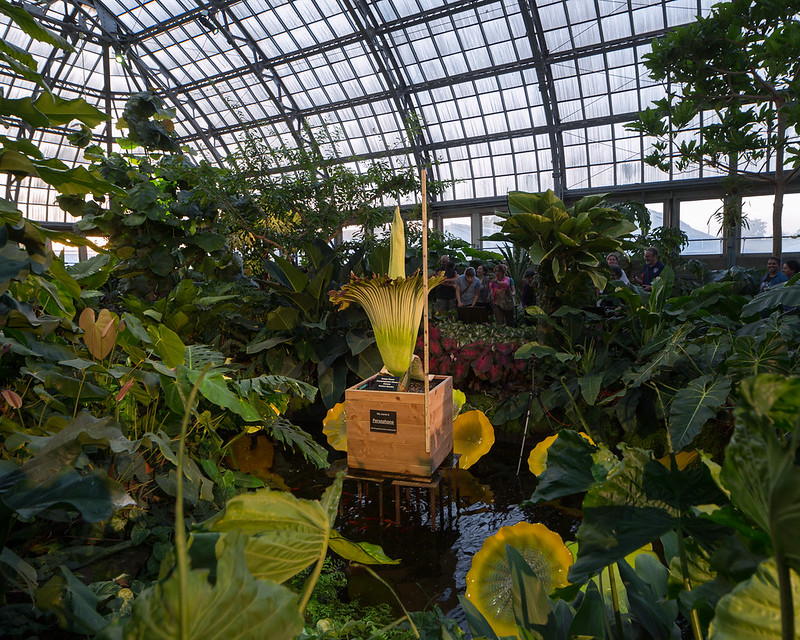There’s something in the air, and it’s not just spring.
The Chicago Botanic Garden has issued a bloom watch for one of its corpse flowers, large flowers that smell like, well, you can guess from the name.
We know that flowers like to attract pollinators in a lot of different ways, like bright colors, scents and nectars.
Some even trap the bugs, at least temporarily, so that when they wriggle out they take some of the pollen with them.
Corpse flowers attract carnivorous insects by imitating the scents of rotting meat and producing a dark red bloom.
This is not maybe the most enticing smell for humans, and yet plant lovers get pretty excited when there’s a bloom watch.
A plant in the wild only blooms every two to five years, so it’s not an everyday occurrence.
The Chicago Botanical Garden has been collecting corpse flowers to help protect the species, so they’ve had several blooms in the last few years.
Their botanists say spotting a bloom ahead of time is easy: corpse flowers grow a lot just beforehand.
A 6-8 foot tall plant that then spreads the smell of rotting meat all over the greenhouse.
This particular corpse flower is named Java, for the Indonesian island, though because it bloomed once before in 2017, the Botanical Garden has taken to calling it by a name that programming geeks might enjoy: Java 2.0.
Last week the campus of the University of Canberra in Australia had to evacuate hundreds of people from the library because of a pervasive smell that the library staff suspected was a dangerous gas leak.
After a little investigating, they found the cause was not a gas leak after all: someone had brought a durian fruit into the building, and it was so incredibly pungent that it kind of took over the building.
Java 2.0 (Chicago Botanic Garden)
Corpse Flower Timelapse Video (Chicago Botanic Garden)

